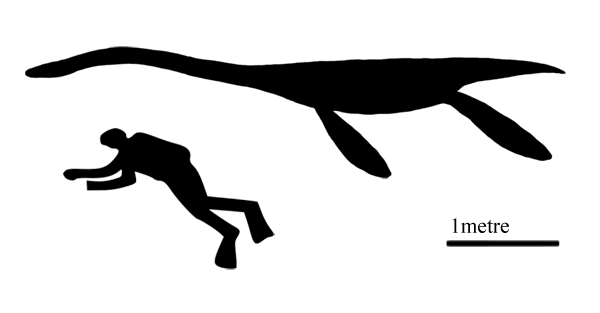The problem is that with them being adopted by my granddaughters, I'm going to have to know the names of these prehistoric creatures. And, well, I have trouble with names longer than my hand. Once I get past the names, it's "How big were the real dinosaurs, Paw Paw?" So I developed this cheat sheet to help me remember their names and size (in the order of construction):
Styracosaurus
pronunciation: sty-RAK-oh-SOR-us:
etymology: According to DinoChecker, Styracosaurus is derived from the Greek "styrax" (spike on the end of a spear) and "sauros" (lizard), referring to the huge spikes on its frill.
wiki: Styracosaurus
link to size illustration
location: North America (Alberta, Montana)
period: Cretaceous (Campanian stage, 75.5-75 million years ago)
Parasaurolophus
etymology: According to DinoChecker: Parasaurolophus is derived from the Greek "para" (near), "sauros" (lizard) and "lophos" (crest) because of its once-thought affinity with Saurolophus due to their superficially similar crests. They aren't as closely related as Parks—the coining author—initially thought.
wiki: Parasaurolophus
link to size illustration
location: North America (Alberta, New Mexico, Utah)
period: Late Cretaceous (76.5-74.5 million years ago)
Pleisiosaurus
pronunciation: plē-sē-ə-ˌsȯr, -zē-
etymology: According to Online Etymology Dictionary. 1825, from Modern Latin Pleisiosaurus (1821), coined by English paleontologist William Daniel Conybeare (1787-1857) from Greek plesios "near," related to pelas, + -saurus.
wiki: Plesiosaurus (Loch Ness Monster a descendant?)
link to size illustration
location: Lias of England
period: Early Jurassic
Spinosaurus
etymology: According to DinoChecker: Spinosaurus is derived from the Latin "spina" (spine) and the Greek "sauros" (lizard) because of the large paddle-like spines raised along its back.)
Wiki Spinosaurus
link to size illustration
location: North Africa
period: Cretaceous (Lower Albian to lower Cenomanian stages)
Dimetrodon
pronunciation: dīˈme‧trəˌdän\etymology: According to Google: modern Latin, from di- ‘twice’ + Greek metron ‘measure’ + odous, odont- ‘tooth’ (taken in the sense ‘two long teeth’
wiki Dimetrodon
link to size illustration
location: southwestern USA and Germany
period: Early Permian (Cisuralian epoch, 295-272 million years ago)
Mammoth
pronunciation: M AE M - uh thetymology: According to Oxford English Dictionary: All of the earliest quotations indicate that English-speakers first encountered the word as a result of the discovery of mammoth bones in Siberia. If ‘read’ carefully, this information can tell us a lot about the emergence and development of the word mammoth.
wiki: Mammoth
link to size illustration
location: Africa, Europe, Asia, North America
period: Pliocene epoch to Holocene epoch (from 5 million years ago to 4,500 years ago)
Pteranodon
pronunciation: tə-ˈra-nə-ˌdän, -ˈrä-\etymology: According to Google: modern Latin, from Greek pteron ‘wing’ + an- ‘without’ + odous, odont- ‘tooth.’
wiki: Pteranodon (a pterosaur, not a dinosaur!)
link to size illustration
location: North America (Kansas, Alabama, Nebraska, Wyoming, South Dakota)
period:late Cretaceous
etymology: Dictionary.com: from Modern Latin order name Stegosauria (O.C. Marsh, 1877), from comb. form of Greek stegos "roof" (from stege "covering," stegein "to cover," from PIE root *(s)teg- "cover," especially "cover with a roof" (cf. Sanskrit sthag- "cover, conceal, hide;" Latin tegere "to cover;" Lithuanian stegti "roof;" Old Norse þekja, Old English þeccan "thatch;" Dutch dekken, German decken "to cover, put under roof;" Irish tuigiur "cover," tech "house;" Welsh toi "thatch, roof," ty "house") + -saurus. The back-armor plates in the fossilized remains look like roof tiles.
wiki: Stegosaurus
link to size illustration
location: western USA and Portugal
period: late Jurassic (from Kimmeridigan to Tithonian ages: 155 - 150 million years ago)
etymology: DinoChecker: Tyrannosaurus is derived from the Greek "tyrannos" (tyrant) and "sauros" (lizard).
wiki: Tyrannosaurus
link to size illustration
location: western North America
period: Late Cretaceous (Maastrichitan age: 68 - 66 million years ago)
HUMAN TIMELINE
PALEOLITHIC ART TIMELINE
period:late Cretaceous
Stegosaurus
pronunication: STEG-uh-SAWR-usetymology: Dictionary.com: from Modern Latin order name Stegosauria (O.C. Marsh, 1877), from comb. form of Greek stegos "roof" (from stege "covering," stegein "to cover," from PIE root *(s)teg- "cover," especially "cover with a roof" (cf. Sanskrit sthag- "cover, conceal, hide;" Latin tegere "to cover;" Lithuanian stegti "roof;" Old Norse þekja, Old English þeccan "thatch;" Dutch dekken, German decken "to cover, put under roof;" Irish tuigiur "cover," tech "house;" Welsh toi "thatch, roof," ty "house") + -saurus. The back-armor plates in the fossilized remains look like roof tiles.
wiki: Stegosaurus
link to size illustration
location: western USA and Portugal
period: late Jurassic (from Kimmeridigan to Tithonian ages: 155 - 150 million years ago)
Tyrannosaurus
pronunication: tye-RAN-uh-SAWR-usetymology: DinoChecker: Tyrannosaurus is derived from the Greek "tyrannos" (tyrant) and "sauros" (lizard).
wiki: Tyrannosaurus
link to size illustration
location: western North America
period: Late Cretaceous (Maastrichitan age: 68 - 66 million years ago)
STEPPING BACK IN TIME, AN OVERVIEW
HUMAN TIMELINE
PALEOLITHIC ART TIMELINE
QUATERNARY TIMELINE
Mammoth <
NEOGENE TIMELINE
> Mammoth
PALEOGENE TIMELINE
CRETACEOUS TIMELINE
Tyrannosaurus
Pteranodon
Spinosaurus
JURASSIC TIMELINE
Mammoth <
NEOGENE TIMELINE
> Mammoth
PALEOGENE TIMELINE
CRETACEOUS TIMELINE
Tyrannosaurus
Pteranodon
Styracosaurus
Spinosaurus
JURASSIC TIMELINE
TRIASSIC TIMELINE
PERMIAN TIMELINE
Dimetrodon




















No comments:
Post a Comment